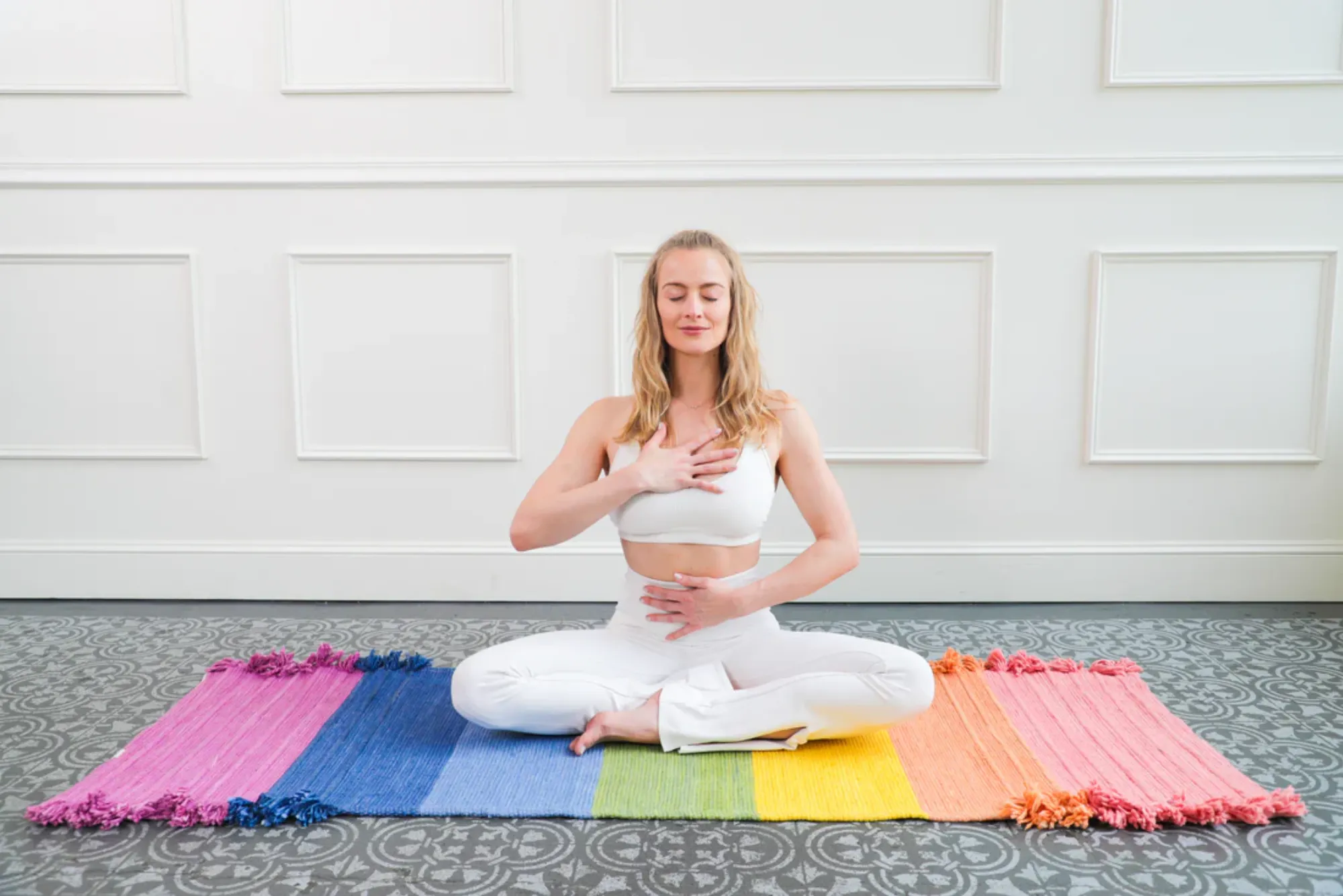In the realm of spiritual practices, Egyptian yoga stands out as a profound pathway to inner harmony and enlightenment. Central to this ancient tradition is the art of meditation and the activation of chakras, the energy centers within the body. In this article, we delve into the rich tapestry of Egyptian yoga, uncovering its principles, and exploring how meditation and chakra activation can unlock our full spiritual potential.
Understanding Egyptian Yoga:
Historical Roots:
Egyptian yoga has its origins in ancient Egypt, a civilization known for its deep spiritual insights and practices. The ancient Egyptians had a profound understanding of the interconnectedness of the body, mind, and spirit, and they developed a system of yoga that aimed to harmonize these aspects of the self. This form of yoga was closely intertwined with their religious beliefs and rituals, forming an integral part of their daily lives.
Core Principles:
At the heart of Egyptian yoga are principles that emphasize unity, balance, and connection with the divine. Unlike some modern forms of yoga that focus primarily on physical postures (asanas), Egyptian yoga encompasses a holistic approach to well-being. It integrates physical movement, breathwork (pranayama), meditation, and spiritual philosophy to cultivate harmony and alignment within the individual.
Significance within Egyptian Spirituality and Culture:
Egyptian yoga is deeply rooted in the spiritual and cultural heritage of ancient Egypt. The ancient Egyptians believed in the existence of a universal life force, which they referred to as “Ka” or “Prana.” They saw this life force as flowing through the body via energy channels known as meridians or “Sen.” Egyptian yoga practices were designed to enhance the flow of this life force energy, promoting health, vitality, and spiritual awakening.
Connection to Mythology and Symbolism:
Egyptian yoga draws upon the rich mythology and symbolism of ancient Egypt. Practitioners often incorporate symbols such as the Ankh (symbol of life), the Eye of Horus (symbol of protection and healing), and various hieroglyphs into their practice. These symbols serve as focal points for meditation and contemplation, helping practitioners to connect with deeper layers of consciousness and spiritual wisdom.
Modern Interpretations:
While much of the ancient knowledge of Egyptian yoga was lost over time, there has been a resurgence of interest in recent years. Modern practitioners seek to revive and reinterpret these ancient teachings, adapting them to suit the needs and lifestyles of contemporary society. Through dedicated practice and study, individuals can tap into the timeless wisdom of Egyptian yoga and experience its transformative power in their lives.
Understanding Egyptian yoga requires a holistic perspective that encompasses its historical, philosophical, and cultural dimensions. By exploring its roots and principles, practitioners can gain deeper insight into this ancient tradition and unlock its profound potential for spiritual growth and self-discovery.
Basics of Meditation in Egyptian Yoga:
The basics of meditation in Egyptian yoga encompass a multifaceted approach to quieting the mind, cultivating inner stillness, and connecting with the divine. Here’s a more detailed explanation:
Mindfulness and Stillness:
Like many forms of meditation, Egyptian yoga emphasizes the practice of mindfulness, which involves bringing full attention to the present moment without judgment. Practitioners are encouraged to observe their thoughts, emotions, and bodily sensations with awareness and acceptance. By cultivating this state of mindfulness, individuals can develop greater clarity of mind and inner peace.
Breathwork (Pranayama):
Breathwork plays a central role in meditation within the Egyptian yoga tradition. Pranayama techniques are used to regulate the breath and harness the life force energy known as “Prana” or “Ka.” By practicing controlled breathing exercises, such as deep diaphragmatic breathing or alternate nostril breathing, practitioners can calm the mind, energize the body, and enhance their overall sense of well-being.
Visualization and Imagery:
Visualization is another key component of meditation in Egyptian yoga. Practitioners are guided to create mental images or visualizations that evoke feelings of peace, harmony, and spiritual connection. These visualizations may involve imagining sacred symbols, deities, or natural elements such as light or water. Through the power of imagery, individuals can access deeper layers of consciousness and tap into the wisdom of the subconscious mind.
Mantra Meditation:
Mantra meditation involves the repetition of sacred sounds, words, or phrases to focus the mind and evoke a specific state of consciousness. In Egyptian yoga, practitioners may chant ancient Egyptian prayers, hymns, or affirmations that resonate with their spiritual aspirations. The rhythmic repetition of these mantras helps to quiet the chatter of the mind and attune the practitioner to higher frequencies of energy and awareness.
Meditative Postures and Gestures:
Just as in other forms of yoga, specific postures (asanas) and gestures (mudras) are used to facilitate meditation in Egyptian yoga. Practitioners may sit in a comfortable seated position such as lotus pose or half-lotus pose, with the spine erect and the hands resting on the knees or in a specific mudra. These postures and gestures help to channel energy flow and create a sense of stability and groundedness during meditation.
Integration of Sound and Silence:
In Egyptian yoga, meditation often involves a balance between sound and silence. While mantra chanting or guided meditations may be used to focus the mind, periods of silent contemplation are also valued for their ability to deepen inner awareness and facilitate communion with the divine. By embracing both sound and silence, practitioners can explore the depths of their consciousness and experience profound states of inner peace and clarity.
Overall, the basics of meditation in Egyptian yoga encompass a diverse array of techniques aimed at quieting the mind, balancing the energy body, and fostering a deeper connection with the divine. Through regular practice and dedication, individuals can cultivate a profound sense of inner stillness, clarity, and spiritual awakening.
Chakras:
In Egyptian yoga, the concept of indulekha clinic holds significant importance. These subtle energy centers are believed to govern various aspects of our physical, emotional, and spiritual well-being. From the root chakra at the base of the spine to the crown chakra at the top of the head, each chakra plays a unique role in the flow of energy throughout the body. By understanding and activating these chakras, practitioners can unlock their full potential and achieve a state of balance and harmony.
Chakra Activation Techniques:
Chakra activation techniques in Egyptian yoga involve practices aimed at clearing blockages, balancing energies, and awakening the subtle energy centers known as chakras. Here’s a deeper exploration of these techniques:

Visualization:
Visualization is a powerful technique used to activate and balance the chakras. Practitioners visualize each chakra as a spinning wheel of energy, located along the spine from the base to the crown. By focusing attention on each chakra and imagining it glowing with its corresponding color (e.g., red for the root chakra, orange for the sacral chakra), individuals can stimulate the flow of energy and promote healing within each energy center.
Mantra Chanting:
Chanting specific sounds or mantras associated with each chakra can also facilitate chakra activation. In Egyptian yoga, practitioners may chant ancient Egyptian words or hymns that resonate with the qualities of each chakra. For example, the mantra “Ra” may be chanted to activate the solar plexus chakra, which is associated with personal power and will.
Breathwork (Pranayama):
Pranayama techniques are integral to chakra activation in Egyptian yoga. By regulating the breath, practitioners can balance the flow of prana (life force energy) throughout the body and stimulate the chakras. Techniques such as alternate nostril breathing or breath retention (kumbhaka) can be used to direct prana to specific energy centers and promote their activation.
Mudras (Hand Gestures):
Mudras are symbolic hand gestures that are used to channel energy and stimulate the chakras. In Egyptian yoga, practitioners may use mudras that correspond to each chakra to enhance their activation. For example, the Hakini mudra, which involves touching the fingertips of both hands together at the level of the third eye, can be used to activate the sixth chakra (Ajna) and enhance intuition and inner vision.
Sound Therapy:
Sound therapy, including the use of singing bowls, tuning forks, or chanting bowls, can be employed to harmonize and activate the chakras. Each chakra is associated with a specific musical note or frequency, and by exposing the body to these vibrations, practitioners can resonate with the energy of each chakra and promote balance and healing.
Movement and Yoga Asanas:
Physical movement and yoga asanas (postures) can also be used to activate and balance the chakras. Certain yoga poses are believed to stimulate specific energy centers and promote the flow of prana throughout the body. In Egyptian yoga, practitioners may incorporate dynamic movements or static holds that target the areas associated with each chakra, promoting vitality and well-being.
Crystal Healing:
Crystals and gemstones are often used in chakra activation practices to amplify the energy of each energy center. Practitioners may place crystals corresponding to each chakra on their body during meditation or wear them as jewelry to enhance the activation process. For example, red jasper may be used to stimulate the root chakra, while amethyst may be used to activate the crown chakra.
Egyptian Yoga Practices for Chakra Activation:
Surya Namaskar, or the Sun Salutation, is a fundamental practice in Egyptian yoga that promotes overall energy balance and vitality.

Pranayama techniques, such as alternate nostril breathing, are also integral to chakra activation, helping to regulate the flow of prana, or life force energy, throughout the body. Additionally, the use of sacred geometry in meditation can enhance the alignment of the chakras, facilitating a deeper connection to the divine.
Meditative Rituals for Chakra Opening:
Creating a sacred space for meditation is essential in Egyptian yoga, allowing practitioners to cultivate an atmosphere of tranquility and reverence. Setting intentions before each meditation session helps to focus the mind and channel energy towards specific chakras. Incorporating essential oils and incense can further enhance the meditation experience, creating a sensory-rich environment conducive to spiritual growth.
Benefits of Chakra Activation in Egyptian Yoga:
The benefits of chakra activation are manifold, encompassing physical, emotional, and spiritual aspects of well-being. By harmonizing the chakras, practitioners can experience improved angels care home health, heightened emotional resilience, and a deeper sense of connection to the divine. Ultimately, chakra activation in Egyptian yoga offers a pathway to wholeness and enlightenment, guiding individuals towards their true essence.
In the journey of self-discovery and spiritual growth, Egyptian yoga serves as a guiding light, illuminating the path towards inner harmony and enlightenment. Through the practices of meditation and chakra activation, practitioners can unlock the full potential of their being, transcending the limitations of the physical world and aligning with the divine forces of the universe. As we continue on this sacred journey, may we remember that true fulfillment lies not in external achievements, but in the realization of our innate spiritual nature.




